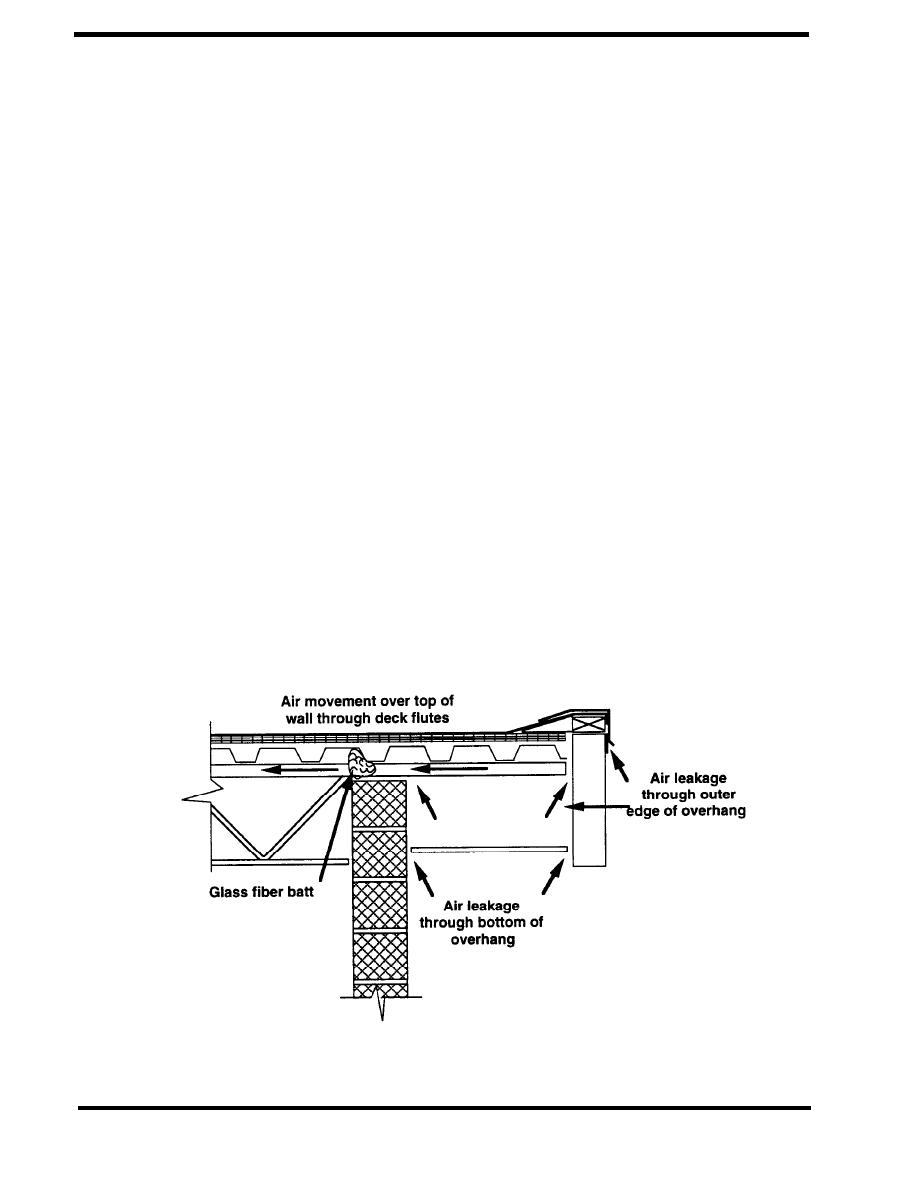
PRINCIPLES/DEFECTS
Other Assemblies
.
Overhangs
.
Soffits
.
Stairwells
.
Interior Partitions
There are variety of other assemblies in buildings that are associated with thermal envelope
defects. Overhangs, where a heated space extends out over an exterior wall, is one such assembly
where air leakage, insulation defects and thermal bridging can occur. Soffits, for example those
located over an entrance, can be associated with air leakage and heat loss from the building interior
into the soffit and then to the outdoors (Perreault 1980, Quirouette 1983, Turenne). Stairwells
located at building perimeters can also be associated with thermal defects (Kudder). They are often
enclosed in concrete block with a single coat of paint and insulation board adhered to the exterior
face of the block. A single coat of paint results in substantial permeability from the stairwell to the
cavity beyond the backup wall, and the insulation board on the exterior of the block will not provide
a functional air barrier. The air-tightness of interior partitions, such as stairwells, elevator shafts and
shafts associated with building services, is often neglected despite its importance to building
thermal performance. Airflow communication between the building interior and these vertical shafts
serve to connect the floors of a building in terms of airflow, thereby increasing the stack pressures
across the exterior envelope and increasing infiltration rates. These stack pressures can also
interfere with the effective operation of mechanical ventilation systems.
Figure 2.3.4 shows an example of an air leakage problem at an overhang involving a steel roof
deck in which air leaks in through the bottom and outer edge of the overhang (Riedel). Airflow then
continues over the top of the outside wall and into the roof insulation. Air is also able to move past
the building wall above the deck since the deck flutes are not adequately sealed; the flutes are
simply stuffed with glass fiber insulation.
UNACCEPTABLE
Figure 2.3.4 Connection of Wall and Roof Overhang (Riedel)
PAGE 2.3-10



 Previous Page
Previous Page
